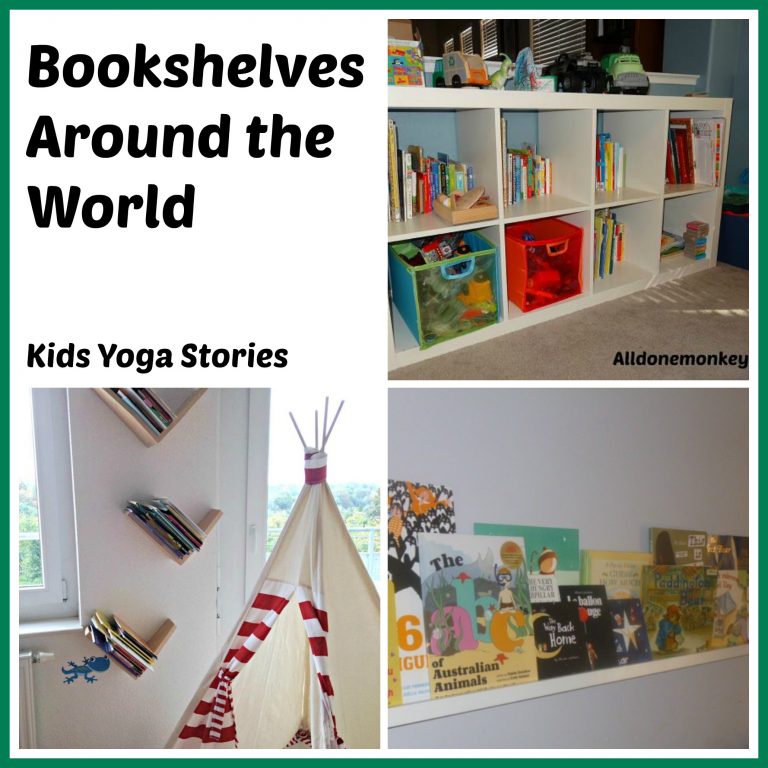What We Can Do About Illiteracy
World Moms Blog is running an eight month campaign to support the UN’s Millennium Development Goals. This month, they are focusing on Goal #2, the right to a universal education for all. During the World Moms Blog and Save the Children‘s Twitter Party recently, this quote hit me:
“The youth illiteracy rate exceeds more than 120 million people worldwide.”
Shocking.
Exactly one of the reasons why I started writing globally-focused children’s books that get kids moving with story. I asked my friends in the Multicultural Kid Blogs group to help me with ideas on “Ways that We can Increase Literary Worldwide, One Child at a Time”. Here is what they had to say …
Ways to Increase Literacy, One Child at a Time:
1. Host a story time at your local library.
“My family and I held a story time hour at a “library” for low income children. I LOVED IT! Another thing, that I did with my little ones when they were younger is we found a low income daycare and we volunteered to read to the kids. At the end of our time we asked friends to donate books and we gave the kids from the daycare a book. So I guess, my suggestion would be to find ways in your area to get kids excited about books.”
Mari Tuten
www.inspiredbyfamilymag.com
“Take advantage of local resources and get actively involved in your child’s reading.”
Cecy
Spanglish House
2. Encourage children to read to each other.
“To increase literacy one child at a time: it’s a great topic! By involving peers: let kids read to kids and practice reading with parents and friends, at home and at school. If you don’t have a library nearby, create one: share a book with a friend. And for adult readers: read every day and promote reading during everyday activities (like shopping, cooking etc.) In many countries the illiteracy of the children is due to the illiteracy of their parents or their relapse into illiteracy. Therefore, it’s important to assist the parents so that they can support their children.”
Ute Limacher-Riebold
Expats Since Birth
3. Encourage parents to read to their children daily.
“Parents reading with children always increases literacy. However, for parents who are illiterate this is a challenge. However, a great parenting workshop I saw at a community center involved showing parents how to sit with their children and talk about the pictures in the picture book and create the story from the pictures as a way to “read” with their children. The workshop focused on young children and parents whose native language was not the language the children were learning to read in, and I thought this was brilliant. The workshop leader spoke of several studies that showed that the act of the parent sitting with the child and a book and exploring the book together encouraged literacy just as much as reading the actual words on the page. What an empowering thing it was for parents who previously felt helpless to ensure that their children were literate even if they themselves were not. Here is an ALA write-up on donating books to libraries (relevant in U.S.).”
Jennifer Fischer
The Good Long Road
4. Donate books.
“Give books. Donate books you no longer need to a local library or to a shelter. The We Give Books is a great organization that I love to promote.”
Natalie Figge
Afterschooling for Smarty Pants
5. Support small publishers who are publishing books by native authors.
“I think we can help by supporting small publishers who are committed to publishing books by native authors, in their local languages so that a child in the Andes can read a culturally relevant book in Quechua, and a child in the foothills of Kathmandu can read a book written in Nepali language.”
Becky Morales
Kid World Citizen
““Just like Becky said, encouraging books to be published in native dialects would be really useful. I think of my kids not being able to read books in their dialect of Arabic (derija) for example as most books are written in Modern Standard Arabic but imagine if derija was their native language? They would have no books to read in their native language! Also, I love the innovative approach out of Kenya for getting more books into more hands: a mobile camel library. And there was a similar approach in Mongolia as well: ”
Stephanie Meade
InCulture Parent
6. Make reading and writing fun.
“Find books children can relate to- with protagonists that are like them. Read books that you loved as a child. Try to make reading fun but also search for good quality books- classics. Use other media as support for books- for example, maybe seeing the film will help your child read the book- or the other way round, and then discuss what changes when you transfer the story to film. Have a lot of books easily available, possibly in multiple languages! Respect books but don’t treat them like they’re “holy”. Meet the child where they’re at- try to find books that meet his interests. Discuss and connect through books. Show them different alphabets and explain that people write in different styles. Let your child see you with a book! For writing: be patient as the child will make mistakes! Read a lot. Write yourself and read to your child what you wrote (have to try that one!). If a child tells you a story, tell them to write it down. Maybe try to paint something in a different alphabet- I am thinking about doing a Chinese to get the feel for the characters.”
Olga Mecking
The European Mama
7. Make free books accessible.
“Let me tell you what we do. It’s not huge, but it makes an impact. We keep books in the clinic at all times. We bring them, get them donated, buy them. We give them away. Anyone who wants a book can have one! No questions asked, no price tag. Just read it and enjoy! We encourage the parents to read to the child, if the child is old enough let her pick out the book. Otherwise, just take one and build your library.”
Lisa Lewis
A World of Difference
“A friend of mine, who is lucky enough to have many many books, created a community library on her front yard. She set up a stand with two plastic chairs beside it. The stand has shelves filled with BOOKS. People who walk by can stop, take a look at a few books and take whatever they want. She has a note on it encouraging people to also bring books to add to her library and maybe leave a book as they choose on or two to take home.”
Thereza Howling
A Path of Light
8. Get involved in local literacy programs.
“I worked with a literacy program for a few years in the US. We had a large population of Hmong refugees. Hmong was not a written language until only a few decades ago, but one of the things the program encouraged was for parents and grandparents to tell the children stories and reinforce the oral culture that they already had. This was one way to bridge the divide between parents who couldn’t read/write in Hmong (let alone English) and their children who were developing early literacy skills.”
Amanda
MarocMama
9. Get involved in international organizations that promote literacy.
“Check out Room to Read! I love these people. I also love We Give Books – and that is an organization that kids can contribute to by reading and then WGB donates books. This is a post I wrote about their Spanish language books online.”
Jenny Brunk
Spanish Playground
10. Sign up for online book clubs.
Check out the Virtual Book Club with Toddler Approved and Educators’ Spin On It to organize reading groups all year round. Get the children excited about reading, sharing, and learning together with other children around the world.
And, well, you know my suggested idea – have fun acting out books through kids yoga poses, going on imaginary adventures, and learning about various countries. What’s your idea to impact illiteracy? We would love to hear from you! Please email me at giselle at kidsyogastories dot com.






